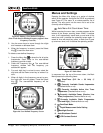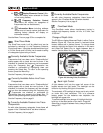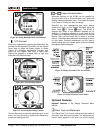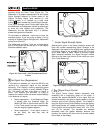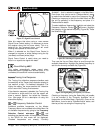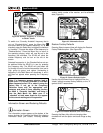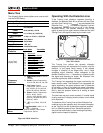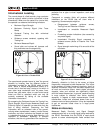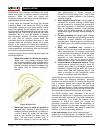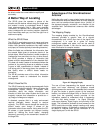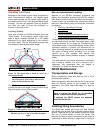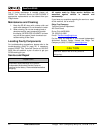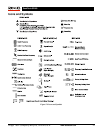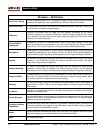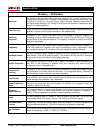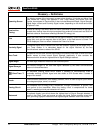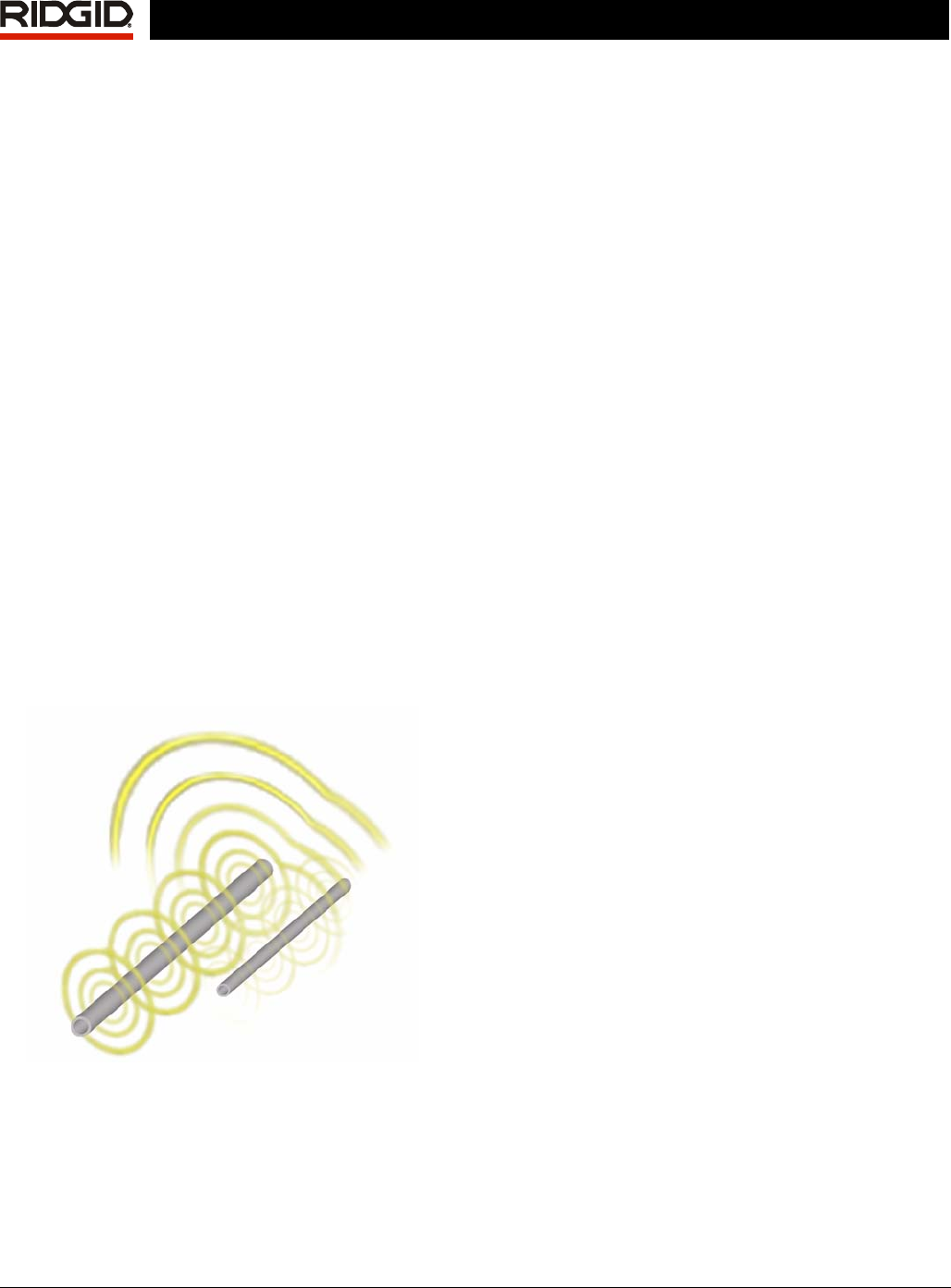
Ridge Tool Company Elyria, Ohio U.S.A www.seektech.com 37
SeekTech SR-60
underground lines (electrical conductors like metal
cables and pipes) or Sondes (actively transmitting
beacons). When the fields are simple and
undistorted, then the information from sensed fields is
representative of the buried object.
If those fields are distorted and there are multiple
interacting fields, it will cause the SR-60 to locate
inaccurately. Locating is not an exact science. It does
require the operator to use judgment and look for all
the information available beyond what the instrument
readings may be. The SR-60 will give the user more
information, but it is up to the operator to interpret
that information correctly. No locator manufacturer
will claim that an operator should follow the
information from their instrument exclusively. A wise
operator treats the information gained as a partial
solution to the problem of locating and combines it
with knowledge of the environment, utilities practices,
visual observation, and familiarity with the instrument
to arrive at an informed conclusion.
Locating accuracy should not be assumed under the
following conditions:
1. When other cables or utilities are present.
“Bleed over” may produce distorted fields
and illuminate cables or pipes unintentionally.
Use lower frequencies when possible and if
possible eliminate connections between the
two cables (such as common bonding to
ground).
Figure 68: Bleed-over
2. When tees, turns, or splits are present in
the line. When following a clear signal that
suddenly becomes ambiguous, try seeking in
a circle of about 20’ around the last known
point to see whether the signal picks up
again. This may reveal a branch, joint, or
some other change in the line. Be alert to
“split opportunities” or sudden changes of
direction in the utility being traced. Turns or tees
can cause a sudden increase in the Distortion
Indicator response.
3. When Signal Strength is low. A strong signal is
necessary for accurate locating. A weak signal
can be improved by changing the grounding of
the circuit, frequency, or transmitter connection.
Worn or damaged insulation, bare-concentric
cables, and iron pipes exposed to ground will
compromise Signal Strength through leakage to
ground.
4. Far-end grounding will change Signal Strength
significantly. Where far-end grounding cannot be
established a higher frequency will provide a
stronger signal. Improving ground conditions for
the locating circuit is a primary remedy to a poor
signal.
5. When soil conditions vary. Extremes in
moisture, either very dry or water-saturated, may
affect measurements. For example, ground that
is saturated with salty water will shield the signal
severely and be very difficult to locate in,
especially at high frequencies. In contrast,
adding water to very dry soil around a ground
stake can make a major improvement in signal.
6. In the presence of large metal objects. Simply
walking past a parked car during a trace, for
example, can cause an unexpected increase or
decrease in Signal Strength, which will revert to
normal when past the distorting object. This
effect is stronger at high frequencies, which
“couple” more readily onto other objects.
The SR-60 cannot change the underlying conditions of a
difficult locate, but changing frequency, grounding
conditions, transmitter location, or isolating the target line
from a common ground can change the results, by
making a better ground connection, avoiding signal
splits, or reducing distortion. Other locating receivers will
give an indication that they may be over the line but they
have less ability to determine the quality of the locate.
The SR-60 provides more information. If all of the
indicators are aligned and in agreement, mark-outs can
be made with more confidence. If the field is distorted it
shows immediately. This allows the operator to do
something to isolate the target line, change the
grounding, connection point, move the transmitter, or
change the frequency to get better reception with less
distortion. For extra certainty, take steps to inspect the
situation, such as by requesting potholing.
In the final analysis, there is one “most important”
component in the locating task – the operator. The SR-
60 provides an unprecedented amount of information to



